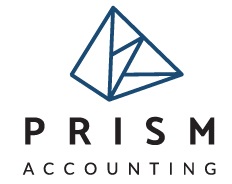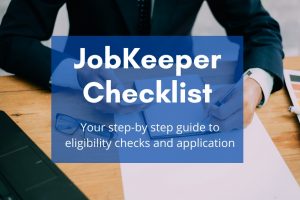Instant Asset Write Off threshold of $150,000 was extended till 31 December 2020 for businesses with aggregated turnover of less than 500 million as part of Government’s Coronavirus Economic Response. While these measures may seem generous, the incentive may not be beneficial for every business.
Before you decide to heavily invest in assets for your business, you need to consider the following issues.
Not all assets are eligible for Instant Assets Write Off
Only assets that fit the definition of “Depreciable Asset” under Division 40 are eligible for immediate write off. Generally speaking, these are items with limited effective life, which are also known as items of Property, Plant and Equipment. Examples of such assets are:
– Items of machinery and electronic equipment
– Free-standing office furniture
– Computer equipment and software
Before getting too excited about the idea of claiming immediate deduction for a brand new fitout for your business premises, you need to be aware that Instant Asset Write Off does not apply to items of Capital Works, such as extensions, alteration and structural improvement to a building. Deductions for these items are claimed under Division 43 (generally, over 40 years period at 2.5% per year). Example of capital works deductible under Division 43 include:
– Partition walls,
– Doors and windows
– Tile flooring
– Electrical works
– Plumbing
– Suspended ceiling
– Wall mounted storage systems
These costs are not eligible for immediate asset write off.
Claiming Instant Asset Write Off may drive you into a lower tax bracket, which will reduce the tax advantage of your claim
The amount of tax advantage you get from claiming a deduction is determined by your marginal tax rate. If claiming a deduction results in your taxable income dropping to a lower tax bracket, you will not be getting a full tax advantage of your deduction.
Example:
Sam runs his professional practice as a sole trader. In 2020, his net income before depreciation expense was $250,000. On 1 May 2020, he purchased and installed ready for use a piece of equipment with effective life of 5 years for $140,000 (net of GST).
If Sam decides to claim instant asset write off for the equipment, assuming he does not have any other income and deductions, his taxable income in 2020 would be $110,000. The tax rate of 39% applies to every dollar of taxable income between $90,000 and 180,000, and 47% for every dollar above $180,000. This means Sam will get back 47% on the first $70,000 of his deduction ($32,900) and only 39% on the remaining $70,000 (27,300).
Let’s assume that in the following year (2021), Sam’s business is no longer impacted by Covid-19 restrictions, and his net profit increases to $400,000 and stays the same for the next 4 years.
| Tax Year | 2020 | 2021 | 2022 | 2023 | 2024 | 2025 |
| Income | 250000 | 400000 | 400000 | 400000 | 400000 | 400000 |
| Deductions | 140000 | 0 | 0 | 0 | 0 | 0 |
| NET TAXABLE INCOME | 110000 | 400000 | 400000 | 400000 | 400000 | 400000 |
| TAX | 30397 | 161097 | 161097 | 158667* | 158667* | 149592* |
| Total tax payable over 6 years | 819517 | |||||
| * Based on 2020 Federal Budget Rates | ||||||
If Sam applies Immediate Asset Write Off, his tax position will be as follows (Tax Offsets are ignored for simplicity):
If Sam decides to claim deduction based on Prime Cost method depreciation over 5 years, his tax position will be as follows:
| Tax Year | 2020 | 2021 | 2022 | 2023 | 2024 | 2025 |
| Income | 250000 | 400000 | 400000 | 400000 | 400000 | 400000 |
| Deductions | 4667 | 28000 | 28000 | 28000 | 28000 | 23333 |
| NET TAXABLE INCOME | 245333 | 372000 | 372000 | 372000 | 372000 | 376667 |
| TAX | 88404 | 147937 | 147937 | 145507* | 145507* | 138625* |
| Total tax payable over 6 years | 813917 | |||||
| Difference | 5600 | |||||
| * Based on 2020 Federal Budget Rates | ||||||
In the above scenario, Sam is be better off by $5,600 if he chooses to spread the deduction for the cost of equipment over its effective life.
It should be noted that the outcome may not be the same for all taxpayers as every situation is different, especially in the light of the proposed tax cuts that will take effect over the next several years under the Government’s Personal Income Tax Plan. According to the Plan, from 1 July 2020, the income tax thresholds for 19% and 32.5% tax rate will increase, and from 1 July 2024 the 32.5% and 37% tax rates will be replaced with 30% tax rate, which will apply to taxable income between 41,000 and 200,000.
The individual tax thresholds do not apply to companies. However, they must be considered when the profit is ultimately distributed to shareholders. In case of resident individual shareholders, the profit will ultimately be taxed in their hands at their personal marginal tax rates applicable at the time through the application of imputation system.
The company may also have a tax loss as a result of application of simplified depreciation. The loss cannot be distributed to shareholders, and in order to utilise losses in future years, the company needs to pass certain tests.
If the business is operated by a trust entity, realising a tax loss can have negative consequences, such potential loss of franking credits if the trust is receiving dividend distributions. Trusts are also subject to loss utilisation provisions.
To apply Immediate Asset Write Off, small businesses must elect to use SBE Simplified Depreciation rules
If an entity falls under the definition of a Small Business Entity (broadly, have the aggregated turnover for the year of less than 10 million), it may chose to deduct depreciation either under general capital allowance rules based on effective life of the assets (Division 40) or under simplified depreciation regime for small business entities (Division 328).
If you choose to claim depreciation under the simplified depreciation regime for the income year, you must apply the entire set of rules of Division 328 to ALL eligible depreciating assets (i.e. other than those specifically excluded) that you started to use or had installed ready for use during or before that income year.
– You must deduct costs of all eligible assets that cost less that the Instant Asset Write Off threshold at the time you start to use the asset or have it installed ready for use.
– All eligible assets exceeding the Instant Asset Write-Off Threshold must be allocated to a general small business pool.
– Assets allocated to the pool are normally depreciated at 15% in the first year in which they are acquired, and at 30% in subsequent years. Assets eligible for accelerated depreciation under “Backing Business Investment” are depreciated at 57.5% in the first year.
– Once the asset is allocated to a small business pool, it must remain in the pool even if your business is no longer classified as a small business or if you choose not to apply simplified depreciation regime in the subsequent years.
– If the balance of the pool at the end of the income year (before applying the depreciation deductions) is less than the instant asset write-off threshold at that time, you must deduct the balance in full.
Example:
Assume that Sam in the above example also had assets, which he previously allocated to small business pool. The pool balance as of 30 June 2020, before depreciation, was $120,000. As the pool balance at the end of the income year was below the IAWO threshold effective at the time ($150,000), he would have to deduct the pool balance in full.
Continuing from the above example, deducting the balance of small business pool in full would result in Sam having a tax loss of $10,000 in that year.
As can be seen, simplified depreciation rules for small businesses do not provide flexibility to choose different treatment for different assets. Business owners should carefully consider if choosing simplified depreciation rules would provide better tax outcome compared to Division 40 rules.
What about Medium Sized Businesses?
As a part of the Coronavirus Economic Response, Australian Government expanded eligibility for Instant Asset Write Off for 12 March 2020 – 31 December 2020 period to include businesses with aggregated turnover of less than $500 million.
Medium sized businesses, however, are not subject to Division 328 rules by definition as the division only applies to small businesses. Rules for instant asset write off for medium businesses are contained in section 40-82, which is a part of Division 40. Medium businesses do not have to use pooling for all the other assets not eligible for immediate write off.
Can small businesses choose to apply section 40-82 instead of Division 328 to claim instant write off while avoiding pooling?
Section 40-82 only applies to medium sized businesses. The definition does not include entities classified as small business entity for that year. If a small business entity does not choose to apply simplified depreciation for the year, it must claim depreciation deduction under other provisions of Division 40 (i.e. based on assets effective life).
Instant Asset Write Off and Car Limits
There is a common misconception among business owners that temporary increase in instant asset write off limit allows you to claim full cost of a car you use for business purposes if it costs less than $150,000. This is not the case!
While cars can be eligible for instant asset write off, taxpayers should note the following points:
– Car limit applies to passenger vehicles designed to carry a load of less than one tonne and fewer than nine passengers. The car limit is $57,581 for 2020 and $59,136 for 2021 financial year (including GST).
– You can only use business portion of the car limit based on the percentage of business use. You need to have a valid logbook to substantiate your business use percentage.
– If you later sell your car or stop using it for business purposes, it will result in balancing adjustments, which you will have to include in your taxable income.
Points to consider before claiming Instant Asset Write Off
If you are planning to invest in business equipment, it could be a great tax planning opportunity to bring forward tax deductions. However, things you need consider before making such decision include the following:
– Before you can claim a tax deduction, you must incur an expense. Whether you buy the asset outright or apply for finance, the purchase is an expense you make that will result in cash outgoing. In the latter case, claiming instant asset write off will assist you temporarily with cash flow by bringing forward tax deduction before you will have to pay off the loan, but it will only be a temporary relief.
– Claiming immediate deduction for asset cost will only affect timing of the deduction, not the total amount claimed.
– if claiming immediate deduction on equipment results in decreasing your personal income to a lower tax threshold, you will not be getting the full benefit of your tax deduction. In this case, you may be better off spreading it over the effective life of the asset or electing to enter simplified depreciation regime in later years.
– Small business intending to claim immediate asset write off deduction must elect to apply Simplified Depreciation rules under Division 328 (including pooling rules) to all of their assets
– If you later dispose of the asset or change its use, this will result in balancing adjustments. You will have to include the proceeds on disposal of the asset (substituted for Market Value in some cases), which has previously been written off, in your assessable income.
– Consider if leasing equipment is a better option for you than buying it outright.
It should also be noted that you should never base your business decisions on tax consideration alone. If you genuinely need to purchase equipment for your business, now could be a great time. However, you should consider your personal circumstances before making the decision.
Disclaimer: All the information provided on this website is of general nature and does not constitute tax, legal or financial advice. It does not take into account your personal circumstances and is not intended to replace consultation with a qualified professional.







